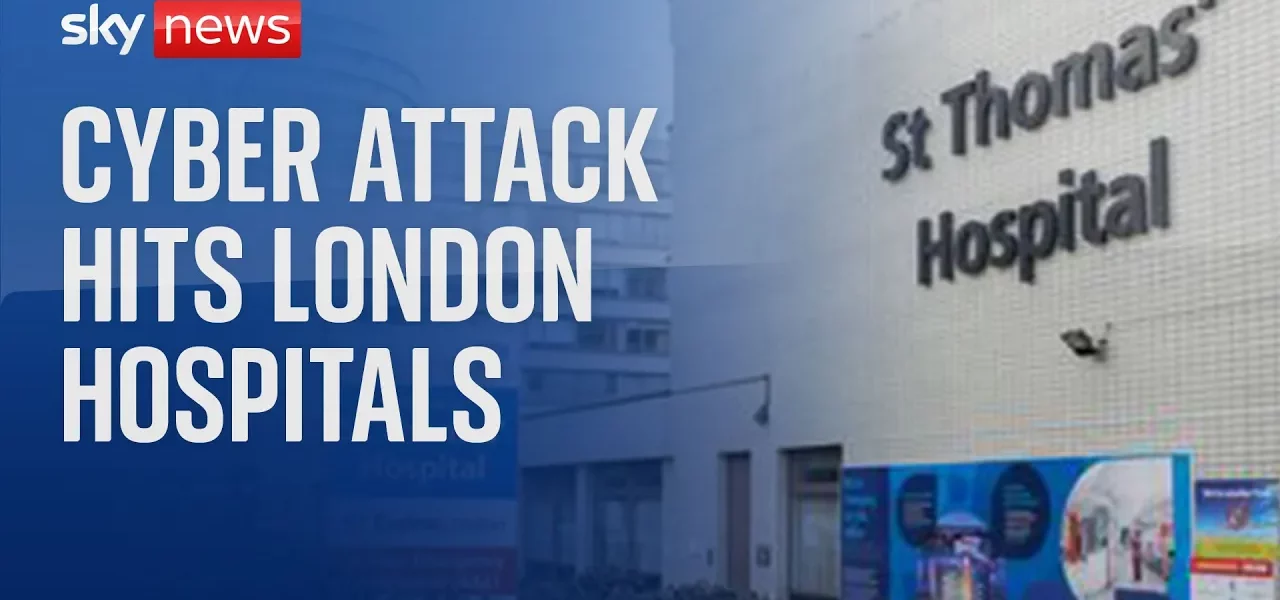Cyber Attack Disrupts Major London Hospitals’ Services

This article provides an in-depth analysis of the recent cyber attack affecting some of London’s major hospitals, detailing the implications for healthcare services, especially blood transfusions, and the broader concerns regarding cybersecurity in healthcare systems.
Introduction
In a significant incident that has raised alarms across the healthcare sector, a cyber attack has targeted several major hospitals in London, leading to the cancellation and redirection of numerous medical procedures. This event has particularly disrupted blood transfusion services, raising concerns about patient safety and the integrity of healthcare systems. The incident highlights the vulnerabilities present in critical healthcare infrastructure, and the potential consequences of cyber threats on public health.
Details of the Cyber Attack
The cyber attack has primarily affected hospitals under the NHS trusts of St Thomas’s and King’s College Hospital. This disruption has been classified as a critical IT incident, leading to significant challenges in the delivery of essential medical services. Below are some key points regarding the nature and impact of the attack:
- Critical IT Incident: The hospitals affected are currently describing the event as a critical IT incident.
- Pathology Services Disruption: The attack has severely impacted pathology services, which are essential for conducting a variety of medical tests.
- Blood Transfusion Services: Non-essential blood transfusions have been paused, and emergency transfusions are being managed manually.
Impact on Patient Care
The ramifications of the cyber attack extend beyond administrative chaos; they pose a direct threat to patient care and safety. Here are the main ways in which patients are affected:
- Delayed Procedures: Many non-urgent procedures have been postponed, potentially worsening the health conditions of patients awaiting treatment.
- Manual Processing of Blood Transfusions: Emergency blood transfusions are now being processed using pen and paper, significantly slowing down the matching and administration of blood types.
- Patient Redirection: Hospitals may need to transfer patients to other facilities capable of providing the necessary care.
The situation is dynamic, and healthcare providers are striving to mitigate risks and provide care to the affected patients.
Understanding Cyber Threats to Healthcare
This incident raises crucial questions about the security of healthcare systems in the digital age. Cybersecurity experts have noted an increase in attacks on critical infrastructure, including healthcare. Here are some of the motivations behind such attacks:
Types of Cyber Attacks
- Ransomware Attacks: These attacks involve hackers encrypting data and demanding ransom for its release.
- Denial of Service Attacks: Such attacks aim to overwhelm systems with traffic, rendering them unusable.
- State-Sponsored Attacks: There is increasing evidence of state actors probing essential services for strategic advantages.
Vulnerabilities in Healthcare Systems
Healthcare systems are particularly vulnerable due to their reliance on outdated technology and the critical need for seamless service delivery. This attack highlights the following concerns:
- Inadequate cybersecurity measures
- Potential for significant patient harm due to disrupted services
- The need for comprehensive cybersecurity training for staff
Conclusion
The recent cyber attack on London’s NHS hospitals serves as a stark reminder of the vulnerabilities inherent in modern healthcare systems. With blood transfusion services critically affected, the implications for patient care are profound. As the situation unfolds, it is essential for healthcare organizations to bolster their cybersecurity measures and prepare for potential future threats. We encourage readers to stay informed about the developments in this ongoing situation and consider the importance of cybersecurity in safeguarding health services.
For more information on cybersecurity in healthcare, visit our related article.
“`




